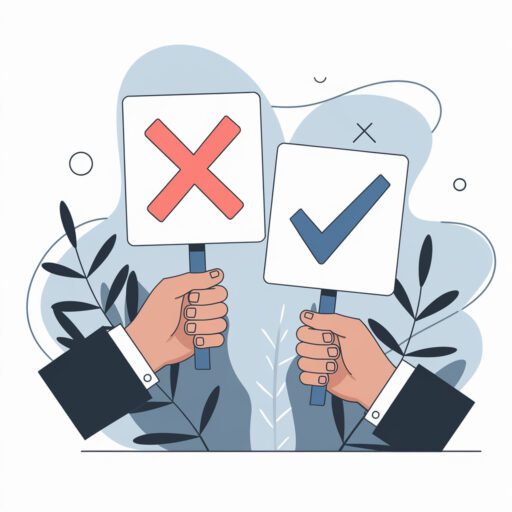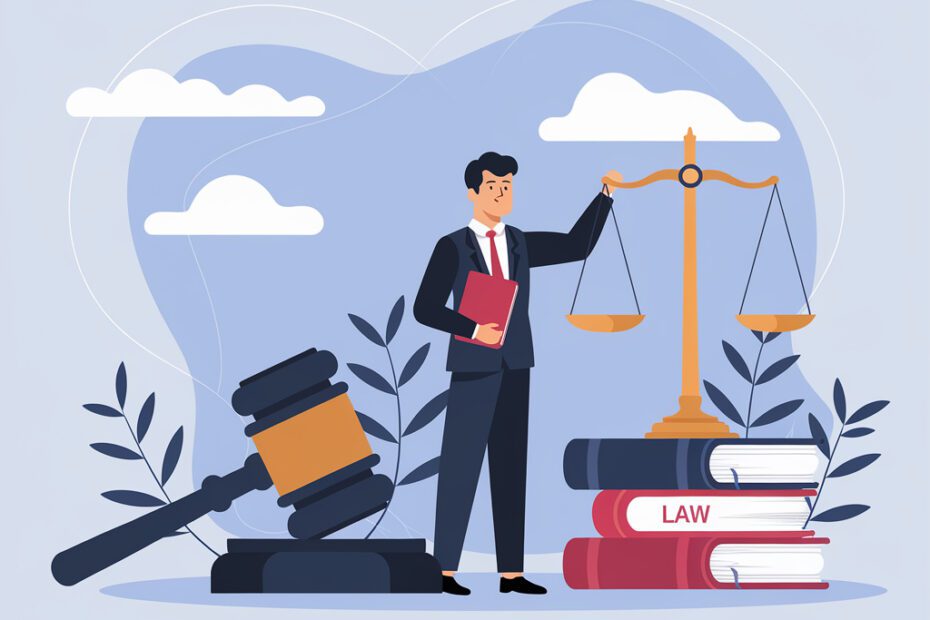In today’s digital world, understanding stock image licensing types is crucial for anyone using visuals. Whether you’re a casual blogger or a large corporation, knowing how to legally use stock images ensures that you avoid legal issues while adding professional-quality visuals to your projects. This article will help you understand the seven essential stock image licensing types and how they apply to your projects. However, it’s essential to understand the legal implications of using stock images to avoid any potential pitfalls.
Using images without the proper licensing can lead to serious legal and financial consequences. To stay compliant and ensure that your image use is ethical and lawful, you need to familiarize yourself with the different types of stock image licenses. In this guide, we’ll break down the seven most common stock image licenses, explain their terms, and show you how to safely use images in your projects.
Why Stock Image Licensing Types Matters
Understanding stock image licensing isn’t just a matter of legality—it’s about protecting your business, finances, and reputation. Here’s why image licensing matters more than most people realize:
Legal Risks
Improper use of images can result in lawsuits, fines, or even having your content taken down. Laws protecting intellectual property are strict, and failing to comply with the terms of a license can lead to significant penalties. For businesses, this can also mean damage to their brand’s reputation and costly legal battles.
Financial Risks
Many creators assume that if an image is available online, it’s free to use. This is one of the biggest misconceptions in the world of digital content. Misusing an image without proper licensing can lead to hefty fines, especially if the image is used in commercial contexts. Some stock photo agencies actively search for improper image use, and their penalties can be harsh.
Reputation Risks
For businesses, getting caught in a copyright infringement lawsuit can seriously damage brand reputation. No one wants to be associated with unethical practices, and misuse of images could lead to a loss of customer trust.
By understanding the different types of licenses, you’ll not only avoid these risks but also ensure you’re respecting the work of photographers and creators.
The 7 Most Common Stock Image Licensing Types

When it comes to stock image licensing, not all licenses are created equal. Let’s break down the seven most common types of licenses so you can determine which is best suited for your project.
1. Creative Commons (CC0 – Public Domain)
Creative Commons Zero (CC0) licenses allow you to use the image for any purpose without any restrictions. No attribution is required, and you can modify, share, and distribute the image freely. This is one of the most permissive licenses available and is widely used in personal projects and blogs.
2. Creative Commons Attribution (CC BY)
With the Creative Commons Attribution license, you can use the image for commercial and non-commercial purposes as long as you credit the original creator. This type of license is great for educational content, blogs, and even some commercial uses, but always ensure proper attribution.
3. Creative Commons Attribution-ShareAlike (CC BY-SA)
This license allows you to modify and use the image, but you must distribute your work under the same license and credit the creator. It’s commonly used in collaborative projects, such as Wikipedia, where shared knowledge is encouraged.
4. Royalty-Free Licensing
The term “royalty-free” can be misleading. It doesn’t mean the image is free of cost, but rather that once you purchase the license, you can use the image multiple times without paying additional royalties. Key aspects include:
- One-Time Payment: You pay once and can reuse the image for different projects.
- Flexible Use: Allows for commercial use, though there may be limitations based on the number of copies distributed.
Royalty-free images are often used in web design, social media marketing, and presentations.
5. Rights-Managed Licensing
A rights-managed license is typically more exclusive and comes with strict terms. The cost depends on how, where, and for how long the image will be used. Rights-managed images are often higher in quality and used in large advertising campaigns, where specific usage rights are important.
6. Editorial Use Only Licensing
Images with an “editorial use only” license can be used in non-commercial contexts, such as news articles, blogs, and educational content, but cannot be used in advertising or other commercial activities. This type of license is often applied to images that feature trademarks, brands, or people without a signed release.
7. Extended Licensing
Extended licenses provide broader usage rights beyond standard royalty-free terms. For example, an extended license might allow unlimited copies of an image or allow it to be used on physical products for sale. Extended licenses are ideal for businesses looking to distribute images widely across multiple channels.
Common Legal Pitfalls to Avoid When Using Stock Image Licensing Types

Despite the availability of licenses and clear guidelines from stock image platforms, Many users fall into common legal traps related to stock image licensing types that can result in serious consequences. Below are the most frequent mistakes people make when using different stock image licensing types, along with examples and tips to avoid them.
1. Misunderstanding License Terms
One of the most common mistakes is failing to fully understand what a specific license allows or prohibits. For example, just because an image is labeled as “royalty-free” does not mean it can be used for every purpose. Royalty-free typically means you don’t need to pay additional fees each time you use the image, but there may still be restrictions on the number of copies or the types of projects it can be used for.
Example Use Case:
A business owner downloads a royalty-free image from a stock photo site and uses it in a print advertising campaign that distributes over 100,000 copies. However, the license restricts commercial use to under 50,000 copies. This mistake could result in a breach of contract and a hefty penalty from the image provider.
Tip: Always review the fine print of a license before using an image, especially for commercial projects. Each platform may have different terms, and some royalty-free images still have usage limits.
2. Failure to Provide Proper Attribution
Some licenses, such as Creative Commons Attribution (CC BY), require you to give credit to the original creator of the image. Failing to provide proper attribution is a violation of the license agreement and could lead to legal action.
Example Use Case:
A blogger uses a Creative Commons image for a post but doesn’t include a credit to the photographer as required by the license. The photographer notices and issues a takedown request or, in some cases, may pursue legal action for misuse.
Tip: If the license requires attribution, always credit the creator. Include a clear and visible acknowledgment in your content, linking back to the source when appropriate.
3. Modifying Images Without Permission
Some licenses prohibit modifying images, such as cropping, adding filters, or using them as part of a design. For example, “Editorial Use Only” images typically cannot be altered in any way, as they are intended for newsworthy content or public interest.
Example Use Case:
A website designer finds an editorial-use-only image and alters it to fit the design of a website banner. The original photographer files a complaint because the image was not supposed to be edited or used commercially.
Tip: If you plan to edit or modify an image, ensure that the license explicitly allows modifications. For “Editorial Use Only” images, it’s safer to use them as-is and avoid any alterations.
4. Using “Free” Images for Commercial Projects
Just because an image is available for free doesn’t mean you can use it for commercial purposes. Some stock photo sites offer free images that are only allowed for personal use, and using these images for marketing or product promotion could result in legal action.
Example Use Case:
A startup uses a free image from a stock photo site in an online ad campaign. However, the image’s license explicitly states that it’s for personal use only, leading to a cease-and-desist letter from the image provider.
Tip: Always check whether the license permits commercial use before including a free image in any business-related project. If you’re unsure, consider purchasing an image with a clear commercial use license.
5. Assuming Google Images Are Free to Use
Many people mistakenly believe that any image found on Google is free to use. This is a common misconception that can lead to copyright infringement. Images displayed in Google search results are still subject to the original creator’s licensing terms.
Example Use Case:
A small business pulls an image from Google and uses it on their website, thinking it’s free. Later, they receive a copyright infringement notice from the image’s owner, demanding payment or legal action.
Tip: Never use images from Google without confirming their licensing. Instead, use reputable stock photo platforms that offer clear licensing terms.
How to Choose the Right Stock Image Licensing Type for Your Project

Selecting the appropriate stock image licensing types depends on how you intend to use the image and the type of project you’re working on. Choosing the right stock image licensing types ensures that your images are used legally and effectively. Below are different scenarios with recommended licensing types to help you make an informed decision.
1. Personal Projects
For personal projects like blogs, portfolios, or social media posts that don’t involve commercial gain, you can often use images with more relaxed licenses. Creative Commons Zero (CC0) and other free-use licenses are ideal for this purpose, as they allow you to use images freely without restrictions on modification or attribution.
Example Use Case:
A hobby blogger wants to add visuals to a personal blog post. They can use a Creative Commons CC0 image from Unsplash without needing to credit the creator or worry about usage restrictions.
Recommended License: Creative Commons Zero (CC0), free-use licenses from sites like Unsplash and Pixabay.
2. Commercial Projects
For business-related projects, such as websites, marketing materials, or advertisements, you need to ensure that the image license allows commercial use. Royalty-Free or Extended Licenses are often the best options. While royalty-free images can be used repeatedly without additional fees, extended licenses offer broader usage rights, such as unlimited distribution or use in product packaging.
Example Use Case:
A graphic designer creates a brochure for a client’s new product launch. The designer purchases a royalty-free image from Shutterstock, which allows the image to be used in print and digital advertisements without needing to pay additional fees for each use.
Recommended License: Royalty-Free or Extended Licenses for flexibility and commercial use.
3. Social Media and Digital Marketing
When using stock images for social media, it’s essential to check whether the license permits distribution across various platforms. Some licenses restrict how and where images can be used online, especially in paid ads or social media promotions. Royalty-Free and Extended Licenses are generally safe for these purposes, but always double-check the platform’s guidelines.
Example Use Case:
A small business owner uses a royalty-free image in a paid Facebook ad campaign. The royalty-free license allows them to modify the image and distribute it across multiple platforms without needing to purchase additional rights.
Recommended License: Royalty-Free or Extended License for social media use and online distribution.
4. Large-Scale Advertising Campaigns
For large-scale campaigns, where exclusivity and high-quality visuals are critical, a Rights-Managed License is often the best choice. Rights-managed images are licensed for specific uses, such as a single ad campaign or a certain geographic region, and are generally more exclusive than royalty-free images.
Example Use Case:
A global corporation uses a rights-managed image for an international marketing campaign. The license allows them to use the image exclusively for the campaign’s duration, ensuring no other company uses the same image.
Recommended License: Rights-Managed License for exclusivity and control over usage terms.
5. Educational or Non-Profit Use
For educational purposes, such as academic presentations or non-profit work, you can often use images with more relaxed licensing terms. Creative Commons Attribution (CC BY) licenses are ideal in these cases, as they allow for modification and redistribution as long as the creator is credited.
Example Use Case:
A teacher uses a Creative Commons image in a classroom presentation. As long as the teacher credits the creator of the image, they can modify and distribute the presentation freely.
Recommended License: Creative Commons Attribution (CC BY) for educational or non-profit use.
Top Websites for Free Stock Images with Minimal Licensing Issues

Using stock images safely often depends on selecting reputable websites that offer clear and user-friendly licenses. Below are some of the best websites that provide free stock images with minimal to no licensing issues, making it easy for creators to find and use images legally.
1. Unsplash
Unsplash is one of the most popular platforms for high-quality, free-to-use images. All photos on Unsplash are free to use for commercial and non-commercial purposes under their Unsplash license. No attribution is required, though it’s always appreciated. The Unsplash license allows for modifications and is designed to be hassle-free for users. However, be cautious with identifiable people or brands in the images, as they might have restrictions.
2. Pexels
Pexels provides thousands of free stock images and videos, all of which can be used for free in personal and commercial projects. Similar to Unsplash, attribution is not required but appreciated. The Pexels license allows for modifications and distribution, making it a popular choice for bloggers, marketers, and content creators.
3. Pixabay
Pixabay offers over a million free images, videos, and illustrations that can be used for personal and commercial purposes. Their custom license is very similar to Creative Commons CC0, allowing free use with no attribution required. Pixabay is an excellent resource for a wide range of high-quality visuals, but be mindful of using images with logos or recognizable individuals.
4. Burst by Shopify
Burst, a free stock photo site by Shopify, is designed for entrepreneurs and online stores, but it also offers a wide range of free-to-use images for other purposes. All images are free under the Burst license, which allows for commercial use without attribution. It’s especially useful for those in the e-commerce or digital marketing industries.
5. Flickr (Creative Commons)
While not all images on Flickr are free, the platform offers a large collection of images under various Creative Commons licenses. You can filter your search to find images that meet your licensing needs, whether for commercial use, modification, or attribution. Always check the specific license of each image to ensure compliance.
6. StockSnap.io
StockSnap.io is another excellent resource for free, high-quality images that can be used without attribution under a similar license to Unsplash. The site has an extensive collection of modern, aesthetically appealing images that are perfect for blogs, websites, and social media.
7. FreeImages
FreeImages provides a large library of free stock photos, but unlike other platforms, it has a few additional usage restrictions, particularly for commercial use. Be sure to check the specific license for each image, especially if you’re planning to use it in marketing or advertising campaigns.
Conclusion
Understanding stock image licensing types is critical to avoiding legal and financial risks. By familiarizing yourself with the seven key stock image licensing types, you’ll be better equipped to make informed decisions and ensure you’re compliant with copyright laws. Whether you’re a blogger, a business owner, or a marketing professional, choosing the right license can save you from costly mistakes and protect your brand’s reputation.
For more information, explore trusted stock image websites and legal resources to stay updated on licensing requirements, or check out our detailed guide on the Best Websites for Free Stock Images.

Pingback: The Ultimate Guide to Mastering Copyright-Free Images: 10 Key Areas for Success - FreeStockImg.com